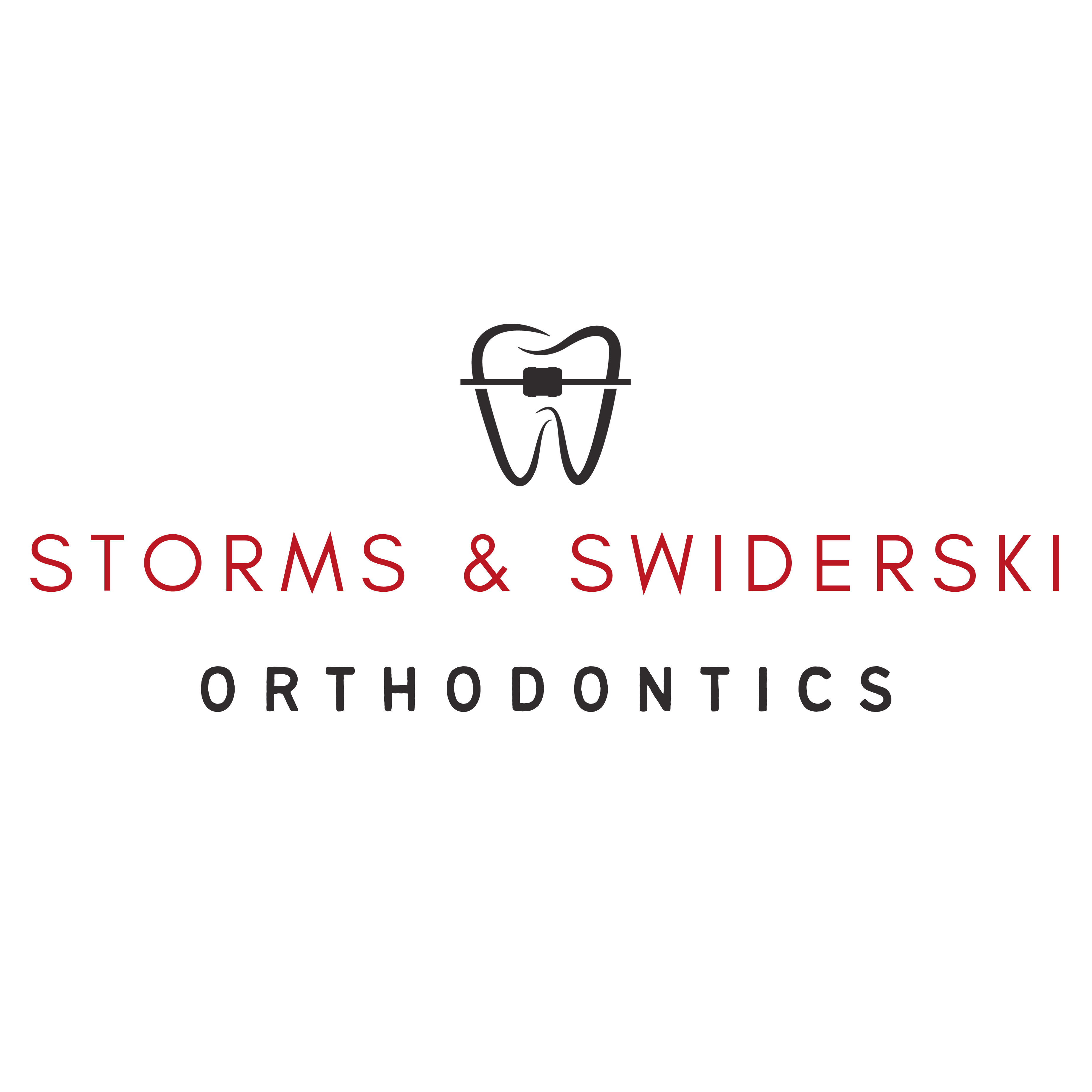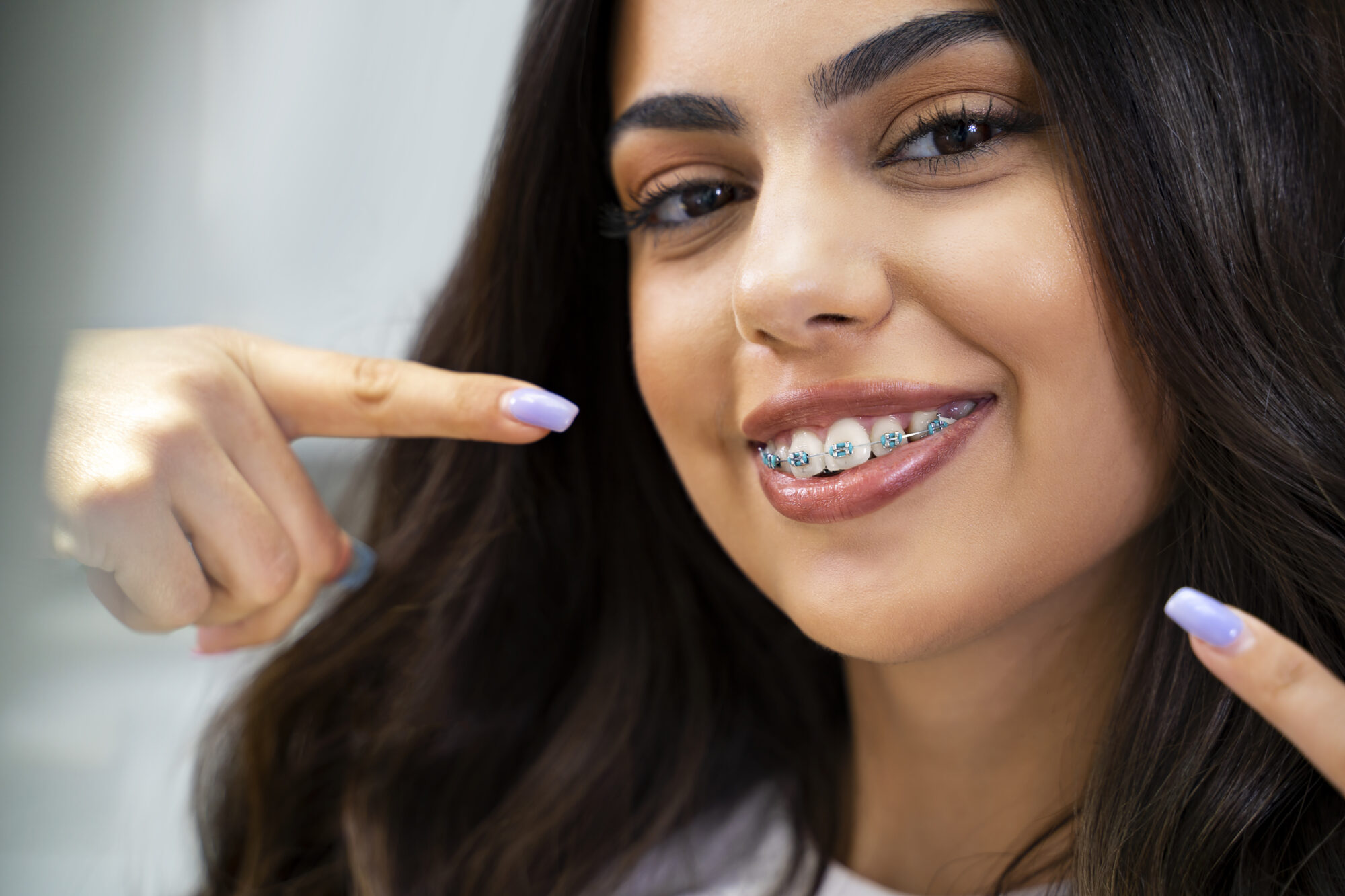Brittany Swiderski, DDS, MS
Board Certified Orthodontist
Patients are often interested in orthodontic treatment for esthetic concern, but the main driver of treatment for an orthodontic specialist is the function of the bite. Two popular options for orthodontic treatment are braces and clear aligners, like Invisalign. While both options are designed to straighten teeth, there are some similarities and differences between braces and Invisalign. In this post, we will explore similarities and differences to help you make an informed decision about which option is best for you.
Similarities between braces and Invisalign:
- Align (“straighten”) Teeth: Both braces and Invisalign are designed to resolve crowding and improve the appearance of your smile. They can both be used to correct issues such as crooked teeth, overbite, underbite, and crossbite.
- Timeframe: The length of treatment for both braces and Invisalign can vary depending on the individual’s case. However, on average, both options take about 12-24 months to complete treatment.
- Maintenance: Both options require some level of maintenance to ensure the best results. Braces require regular adjustments from an orthodontist, while Invisalign requires regular changes of the clear aligners but appointments are often more convenient and farther apart
- Cost: For most cases at Storms and Swiderski Orthodontics, the cost of braces and Invisalign are the same! There are even some cases where clear aligners are more affordable and the recommended choice for treatment.
Differences between Braces and Invisalign:
- Appearance: Braces are made of metal or ceramic brackets that are attached to the teeth and held in place with wires and elastics. Invisalign, on the other hand, uses clear plastic aligners that are nearly invisible. This makes Invisalign a popular choice for adults who may feel self-conscious about wearing braces.
- Compliance: Braces are on your teeth all the time- nothing to take in or out. Clear aligners require the patient to wear them for 20-22 hours per day for optimal success. This means they only take them out to eat or brush their teeth. Clear Aligners will only work if you wear them!
- Oral Hygiene: Since braces are on all the time, it can make it challenging to brush and floss properly, leading to a higher risk of cavities and gum disease. Clear aligners, like Invisalign, are removable, making it easier to maintain proper oral hygiene.
- Comfort: Braces can cause some discomfort due to the brackets and wires rubbing against the cheeks and lips. Invisalign aligners are made of smooth plastic that are often more comfortable to wear.
- Eating and Drinking: With braces, there are certain foods that need to be avoided, such as sticky or hard foods that can damage the brackets and wires. Invisalign aligners are removed before eating or drinking, so there are no restrictions on what you can eat or drink.
In conclusion, both braces and Invisalign are effective options for orthodontic treatment. Choosing between the two comes down to personal preferences, lifestyle, and the recommendation of your orthodontist. If you’re interested in either of these options, schedule your complimentary consultation with Storms and Swiderski Orthodontics to see if you could be a good candidate for braces or Invisalign!
Please call Storms and Swiderski Orthodontics at (479) 370-4698 if you have any questions about alignment of your teeth, braces, or Invisalign. We are proudly serving patients from Northwest Arkansas including Springdale, Fayetteville, Siloam Springs, Fort Smith, Rogers, Bentonville, Lowell, Cave Springs, Elm Springs, Tontitown, Elkins, Prairie Grove, Gentry, Goshen, Farmington, Oklahoma and more!




